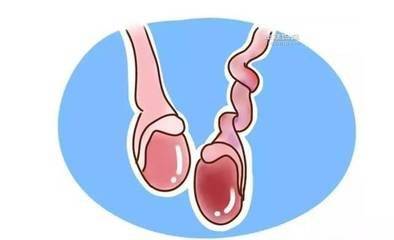The importance of the testicles to men goes without saying. Their main function is to secrete male hormones, produce sperm, and maintain normal fertility. However, the testicles are very fragile and can be damaged to varying degrees by impacts, vigorous exercise, exposure to high pollution environments, and frequent contact with toxic chemicals, leading to the onset of testicular diseases.
Which testicular diseases are prone to misdiagnosis?
1. Testicular Trauma
When the male external genitalia suffers trauma, especially the scrotum and penis, it can usually be detected and treated promptly. However, testicular injuries are difficult to detect and are often misdiagnosed, leading to missed opportunities for optimal treatment. Since the testicles are enclosed in the scrotum, and most injuries are closed, it is challenging to accurately assess the extent of injury through hematoma and pain. In some cases, testicular injuries can be concealed by pain in the scrotum and perineum; when the testicles have severe infections, the pain may decrease and go unnoticed. If a scrotal hematoma appears, further examination is necessary to determine if the testicles are injured, to prevent serious infections or necrosis due to oversight, potentially leading to testicular removal.
2. Testicular Poisoning
Exposure to environmental pollution can lead to testicular poisoning, especially heavy metal poisoning such as lead, manganese, mercury, and cadmium. Cadmium poisoning can cause mild fibrosis in the testicles and decrease the level of male hormones in the urine. Lead poisoning is particularly dangerous as it can directly impact testicles, disrupt sperm production, affect male hormone synthesis, and reduce male fertility. Additionally, lead can penetrate the blood-testis barrier and enter the semen, blocking the hypothalamic-pituitary-testicular axis regulation, leading to testicular poisoning and affecting male hormone secretion.
3. Testicular Torsion
Testicular torsion is an acute condition where twisting of the blood vessels inside the epididymis causes disruption in testicular blood circulation, leading to ischemia and hypoxic necrosis of the testicles. Testicular torsion can occur in males of all ages, especially in adolescents and newborns, often during sleep when the testicles are suddenly positioned differently due to pressure from the legs. Sudden changes in posture, exposure to cold stimuli, strong impacts, etc., can also cause testicular torsion. Long spermatic cords, incomplete testicular descent, and underdevelopment of the testicles are high-risk factors. Severe pain is a typical symptom of testicular torsion, and immediate medical attention is necessary in such cases.
Qujing Jiuzhou Hospital Reminds: The above three testicular diseases are prone to misdiagnosis, so every male should take them seriously. Assessing the severity of the condition based on pain level is not sensible. The most rational approach is to seek examination at a reputable hospital, disclose your situation honestly to the doctors for timely diagnosis.


